John Hurrell – 23 April, 2025
With his contributions, Stephen Bambury's twin-colour twin-triangular stretchers are often activated by splashed drips left after his selected paint's energetic application on the darker opposite half.
These glowing frontal or hovering dark planar chromas are extended by Anne-Marie May's indirect (more chromatically subtle) optical sensations further along the wall, bouncing off the vertical surfaces behind, and so indirectly hidden from her frontally white, aluminium curvaceous constructions.
Stephen Bambury & Anne-Marie May
The Still Point of the Turning World
26 March - 26 April 2025
We have here two approaches about providing a memorable colour experience for the attentive painting admirer. One to do with the physical process of applied colour positioning. The other with the room’s architecture and light…and viewer movement. The works discussed are in the gallery proper and in the stockroom, while the two artists are juxtaposed and collectively mingled, not separated.
With his four contributions, Stephen Bambury’s twin-colour twin-triangular stretchers are often activated by splashed drips left after his selected paint’s energetic application on the darker opposite half. These glowing frontal or hovering dark planar chromas are extended by Anne-Marie May’s indirect (more chromatically subtle) optical sensations further along the wall, several colours bouncing off the vertical wall-surfaces behind, frontally hidden by her white, aluminium curvaceous constructions, but seen from the sides and around edges. They have overtones of dismembered boxes and even large mutilated flowers in their complexity. Also hints perhaps of Picabia’s 1912 Udnie.
The consequences of this is that soft shadows break up May’s three-dimensional contributions and slightly flatten them visually. No such contingent geometries cast from three-dimensional attributes intervene in Bambury’s projects. The two modes therefore don’t overlap. One is smooth, ethereal, even ‘gaseous’—celebrating diffuse light. The other is earthy, weighty and granular, exulting in raw textural splattery sensation.
With the Stephen Bamburys the diagonal line separating the two presented shaped colours acts as a kind of hinge so that the butted triangles can appear to tip, or perhaps even function as a sliding fault-line that becomes a raised escarpment.
In contrast, with Anne-Marie May’s five painted constructions, the shadows recede, advance and tilt while the faint reflected wall colours (as a ‘sensuality’) discreetly compete with the erotic curved edges. May’s forms overtly project out from the wall—built to perform that way—and fascinatingly enough some of the Bamburys do too, as ‘pushed-out’ installed objects that are deliberately not flush with the vertical supporting wall and with unusual sides that gradually change their thicknesses.
The title of this wonderful show (it’s a line from T.S. Elliot) might imply it is about Zen Buddhism (referencing a famous book on the subject, so-titled) but that is misleading. It is a wonderfully nuanced display but for other reasons that are not spiritual or philosophical or to do with motion or the lack of it.
This striking installation, whilst emphasising the impact of colour, tone and shape on surface, overall also looks astutely at the dynamics of edge and plane. It insists that the visitor not only intensely scrutinise each work’s front, but also the sides and back.
In a sense it is a sculpture exhibition not one of painting, though it is about the subtilties of light or lack of. We ponder nine objects as overall units possibly more than their highlighted component planes. Several views therefore are necessary to get a cohesive understanding of their varied, illuminated, spatially separated (flush and angled) surfaces.
John Hurrell
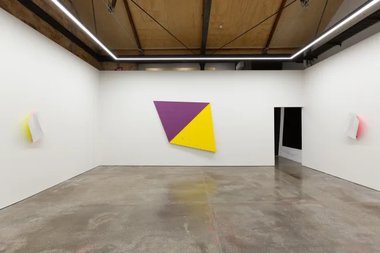
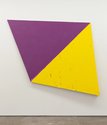
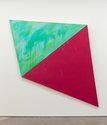
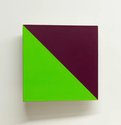
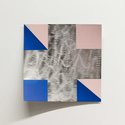
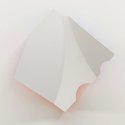

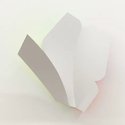


 Advertising in this column
Advertising in this column Two Rooms presents a program of residencies and projects
Two Rooms presents a program of residencies and projects

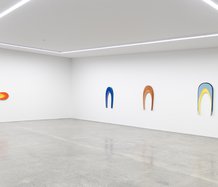
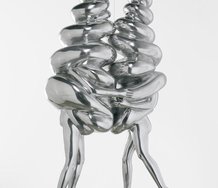
This Discussion has 0 comments.
Comment
Participate
Register to Participate.
Sign in
Sign in to an existing account.